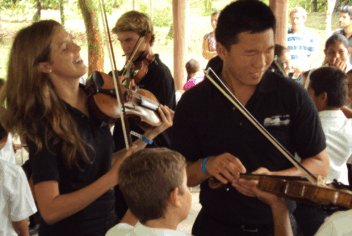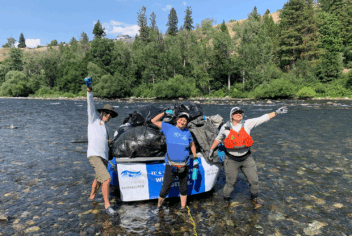Over the last decade, there have been several high-profile cases alleging sexual abuse.
Examples include: The Bill Cosby sexual assault accusations by more than 50 women; the Sandusky/Penn State cases; the Harvey Weinstein case that accelerated the “#MeToo” movement; and ongoing revelations about molestation in the Catholic Church.
There have also been a number of large jury awards against nonprofits in several states this year.
Expanded news coverage has increased public awareness and influenced public opinion on a problem that, unfortunately, is not new.
Changes in public opinion often lead to changes in laws and a social inflation of jury awards.
Jurors hear about these cases and want to make sure justice is served, that the victims are compensated and protections are put into place to make sure these things never happen again.
In many cases, this leads to changes in laws that are good for compensating individual victims but make it difficult to ensure that nonprofits continue to have access to comprehensive and affordable improper sexual conduct insurance.
Increased statute of limitations, the #MeToo movement, and social inflation of jury awards are three phenomena that affect the availability and cost of liability insurance that covers sexual abuse, also known as improper sexual conduct.
These occurrences also affect the loss control efforts of nonprofits, as they will need to adjust how they manage risk in the face of claims that have escalated in severity and frequency.
Increased statute of limitations.
The statute of limitations in a state sets the maximum amount of time after a crime happens within which legal proceedings can be initiated. The amount of time varies by state and also by type of crime. The statute of limitations also varies depending on whether it is a civil proceeding or a criminal proceeding.
In California, for example, you have up to one year to file a claim against a person that defames or slanders you in print, verbally or with pictures (California Code of Civil Procedure section 340(c)).
As a comparison, California Gov. Jerry Brown signed SB 813, a bill eliminating the statute of limitations on criminal sexual offenses including rape, sodomy, lewd or lascivious acts, continuous sexual abuse of a child, oral copulation, and sexual penetration.
Previous California law generally limited the prosecution of a felony sexual offense to 10 years after the offense was committed, unless DNA evidence was found which then offered a victim additional time.
From a civil lawsuit standpoint, California AB 1619 (signed into law this year) greatly enlarges the statute of limitations for filing a civil action for damages for sexual assault to 10 years after the alleged assault or three years after the plaintiff discovered or reasonably discovered injury as a result of the assault, whichever is later.
We are witnessing the introduction of legislation across the country that increases the statute of limitations for sexually related crimes both from a civil and criminal standpoint.
This is laudable from the standpoint of criminal proceedings and protecting victims, but it makes it harder for nonprofits to defend themselves against civil suits for accusations of negligence that result in improper sexual conduct.
Nonprofits can find themselves accused of negligence if they were in anyway involved in the care of the person, even if they were completely unaware of the abuse.
The more time between the alleged bad act and the time that a claim is made, the more there is staff turnover, the more records are lost or destroyed (records retention guidelines are increasingly less than the applicable statute of limitations), the more memories fade, and even the possibly that the nonprofit has ceased operations.
What the nonprofit is left with is an accusation from a plaintiff and not much in the way of witness corroboration or documentation.
The #MeToo movement.
In 2006, Tarana Burke coined the phrase “Me Too” as a way to help women who had survived sexual violence. She has been dubbed as one of the original “silence breakers” with respect to sexual harassment and abuse.
In the wake of several high-profile sexual harassment cases in 2017, including the Harvey Weinstein abuse allegations and the Larry Nassar conviction, the movement gained traction and was further popularized by the widespread use of the #MeToo hashtag on Twitter and other social media.
In addition to encouraging victims of sexual harassment who had kept silent to now speak up about their experiences, the #MeToo movement led to the introduction of 261 bills in 32 states to encourage reporting of sex-related offenses and make it harder to silence victims by adding restrictions on confidentiality and testimony provisions in settlement agreements.
These new laws include measures to eliminate or greatly limit nondisclosure agreements that prohibit transparency, require mandatory reporting in cases of sexual harassment or sexual assault of children and also measures that change the “severe and pervasive” legal standard of sexual harassment so that a single incident of harassment could be sufficient to satisfy the standard.
Much of the #MeToo legislation will affect how nonprofits train their employees and implement loss control within their organizations.
Inflation of jury awards.
A result of the preponderance of coverage of sexual abuse in the media is that juries are handing down bigger and bigger verdicts.
People are angry and want someone to be held accountable. Handing down huge awards is cathartic for juries when it comes to the abuse of children and other vulnerable populations.
In May 2018, a jury in Georgia handed down a $1 billion verdict for the rape of a 14-year-old girl. While verdicts with nine zeros are not commonplace, verdicts and settlements greater than $750,000 are becoming more frequent.
Increasingly, juries are not finding the offender as the most responsible party. They are increasingly sophisticated and know the person who commits the improper sexual conduct probably has no money.
It has become common for the bad actor to be allocated 10–15% of the responsibility for the sexual molestation or improper sexual conduct, with the remaining majority of responsibility awarded against the nonprofit who had oversight of the child who was the subject of the improper sexual conduct.
The fear of losing a lawsuit and having to pay an exorbitant award leads many insurance companies and nonprofits to opt for settlement as opposed to fighting a civil lawsuit.
Often the consideration of actual negligence of the nonprofit has less relevance than it should otherwise have in the decision to settle.
This phenomenon leads to predatory lawyers filing lawsuits that would not otherwise be filed in the hopes of getting a quick settlement.
The effect on coverage.
The combined effect of the three issues described above is more limited availability of liability insurance for allegations of improper sexual conduct, increased cost of available coverage and more restrictive terms and conditions of whatever coverage is available.
Nonprofits Insurance Alliance remains dedicated to the nonprofit sector, including those nonprofit classes particularly exposed to accusations of negligence, which leads to improper sexual conduct.
Many for-profit insurers, on the other hand, are quickly exiting this class of business because nonprofits make up only a small part of their book and it behooves them to pull out of the sector when conditions threaten profits for their owners and stockholders.
We have seen a significant increase in applications for improper sexual conduct and physical abuse liability coverage for social service risks because a nonprofit’s current insurance carrier has given a nonrenewal notice, significantly decreased the amount of improper sexual conduct limits they are willing to write, or has increased the premium to the point where the nonprofit cannot afford the coverage.
These types of renewal responses are often unrelated to the loss experience of the nonprofit, but instead reflect a mass exiting of carriers from the market.
How nonprofits with exposure can protect themselves.
In addition to having thoughtful and effective policies and procedures as well as proper training, one of the most effective ways to control claims is to have consistent and complete documentation.
If there is a claim of improper sexual conduct arising out of alleged negligence against a nonprofit, the outcome of the claim often comes down to having documentation to prove the nonprofit followed procedures and did what they said they would do on a regular basis.
Dave Gibson, our VP of Claims, uses this analogy:
“Have you ever noticed when you go to the doctor she may spend 7 minutes talking to you and doing the exam but then spend 10 minutes inputting notes into her iPad? Why is that? This is a result of the medical malpractice insurance crisis (exorbitant premiums and scarcity of coverage) 15-20 years ago. One of the best ways doctors protect themselves against malpractice claims is to make sure they document everything very thoroughly.”
Given the lengthening or elimination of the statute of limitations, it is crucial that, when an incident happens (even one you think may not turn into a claim), you interview all involved and have thorough documentation.
Some claims can be reported 10 or more years after the incident. Many people involved at the time won’t be there and, for the ones who are still around, memories fade.
Consistent and thorough documentation is key to a successful defense of a claim presented long after the alleged incident took place.
No one likes to have to document allegations of improper sexual conduct, but it is far worse to have a claim presented years later and no ability to defend that claim.
If you don’t have documentation of all the precautions you took, a good plaintiff’s attorney will be able to establish in the jury’s mind that you never took those precautions at all.
Nonprofits must be aware of the indemnification obligations within the contracts they are signing, either with the entities with which they are contracting or any subcontractors they are using.
My philosophy is, “In any negotiated agreement each party should be liable for the things over which they have control.”
Your contract is what determines your liability and you should not be responsible for somebody else’s acts, errors or omissions.
Nonprofits should also think about increasing loss control requirements to make sure claims don’t happen (which is both good for the nonprofit and good for the liability carrier).
As an example, many states have mandatory reporting of incidents of sexual malfeasance for all employees working directly with certain demographics.
A good nonprofit will provide extensive training on a regular basis to these employees to make sure they understand what they should look for and how to report it.
A great nonprofit provides this training to all employees whether or not they are working directly with these clients. They adopt the philosophy of, “See something? Say something!” and they espouse that philosophy over and over.
Other things to consider include:
- How to better control and document instances of one-on-one unsupervised contact with a child
- How to improve supervision for residential facilities when there is 24-hour exposure
- How to ensure adequate supervision for field trips and excursions to reduce the chance of kids going AWOL
Lastly, make sure you are talking with your insurance broker about any planned changes to your liability insurance for your upcoming renewal.
Ask your broker if your current carrier has made changes on other accounts like yours.
- Have they restricted coverage by lowering limits or adding exclusions?
- Have they asked for dramatic rate increases where experience would not otherwise dictate?
- Are they withdrawing from certain classes of business across the board?
Many for-profit insurance companies love to write nonprofits when it is profitable for them. When profits decrease, they typically withdraw from the market and focus on their base portfolio. You want as much notice as possible if any of those things happen to your nonprofit.





